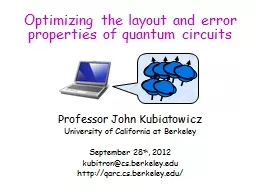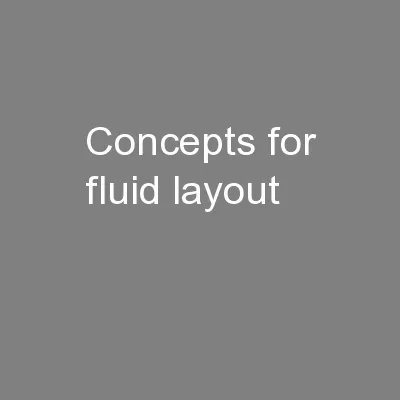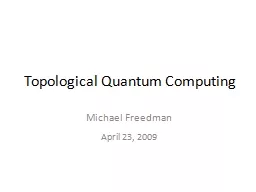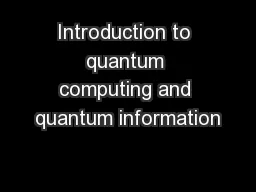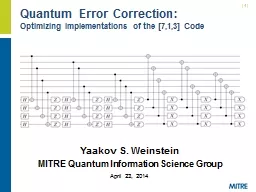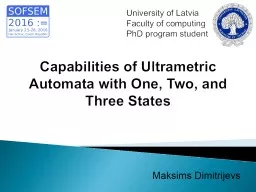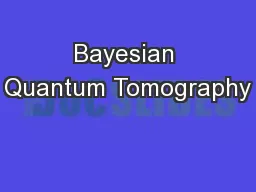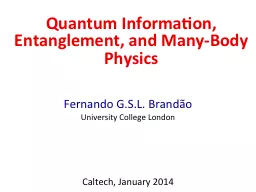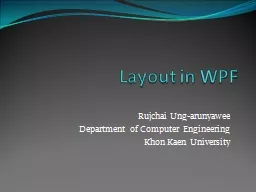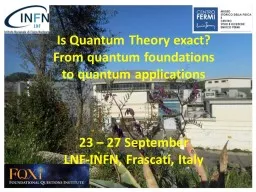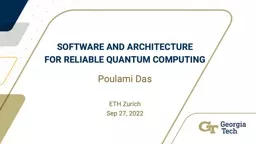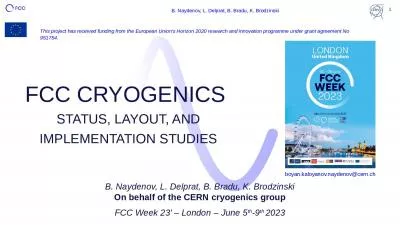PPT-Optimizing the layout and error properties of quantum circu
Author : tatiana-dople | Published Date : 2016-07-29
Professor John Kubiatowicz University of California at Berkeley September 28 th 2012 kubitroncsberkeleyedu httpqarccsberkeleyedu Quantum Circuits are Big Some
Presentation Embed Code
Download Presentation
Download Presentation The PPT/PDF document "Optimizing the layout and error properti..." is the property of its rightful owner. Permission is granted to download and print the materials on this website for personal, non-commercial use only, and to display it on your personal computer provided you do not modify the materials and that you retain all copyright notices contained in the materials. By downloading content from our website, you accept the terms of this agreement.
Optimizing the layout and error properties of quantum circu: Transcript
Download Rules Of Document
"Optimizing the layout and error properties of quantum circu"The content belongs to its owner. You may download and print it for personal use, without modification, and keep all copyright notices. By downloading, you agree to these terms.
Related Documents

